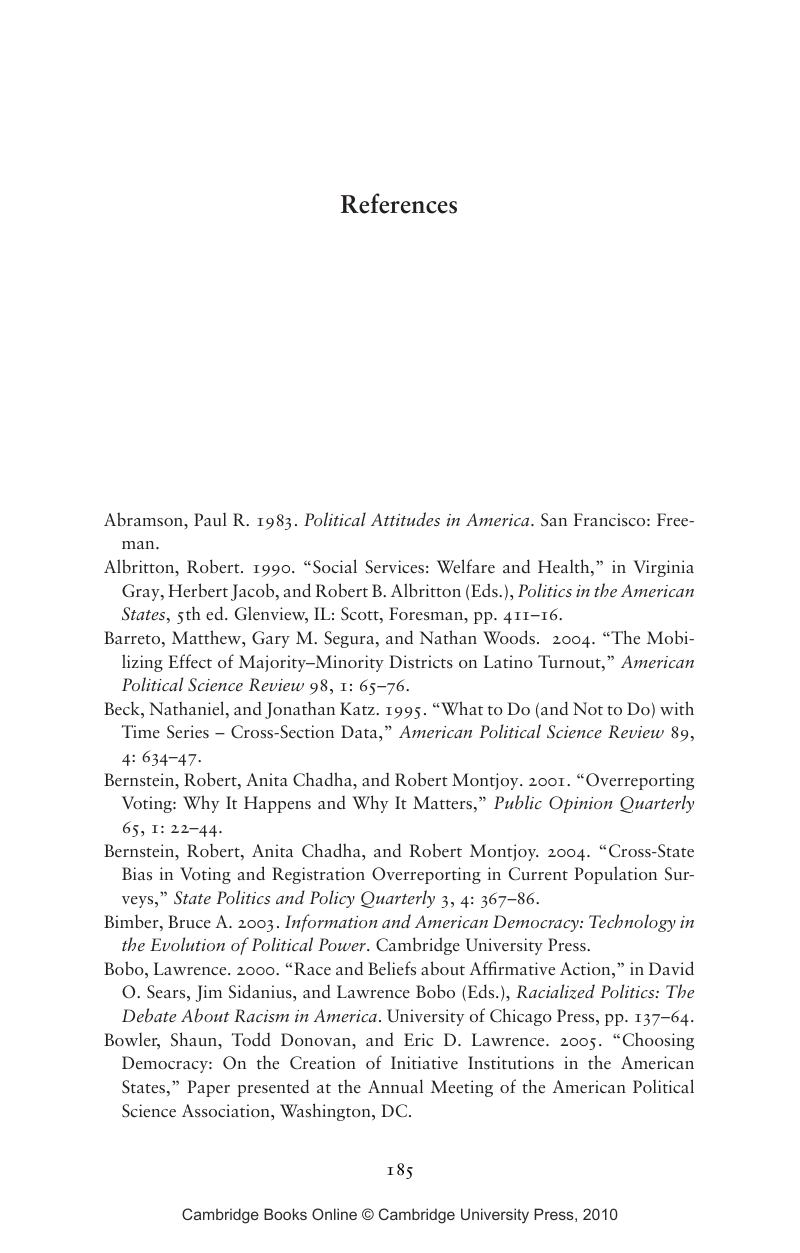Book contents
- Frontmatter
- Contents
- List of Tables and Figures
- Preface
- Acknowledgments
- 1 Introduction
- 2 The Social Capital Thesis
- 3 The Racial Diversity Thesis
- 4 Examining Social Outcomes, and Civic and Economic Equality
- 5 Voter Turnout and Other Forms of Participation in Context (with Caroline Tolbert)
- 6 Public Policy Outputs
- 7 Conclusion
- References
- Index
- References
References
Published online by Cambridge University Press: 18 December 2009
- Frontmatter
- Contents
- List of Tables and Figures
- Preface
- Acknowledgments
- 1 Introduction
- 2 The Social Capital Thesis
- 3 The Racial Diversity Thesis
- 4 Examining Social Outcomes, and Civic and Economic Equality
- 5 Voter Turnout and Other Forms of Participation in Context (with Caroline Tolbert)
- 6 Public Policy Outputs
- 7 Conclusion
- References
- Index
- References
Summary

- Type
- Chapter
- Information
- Racial Diversity and Social CapitalEquality and Community in America, pp. 185 - 194Publisher: Cambridge University PressPrint publication year: 2007



